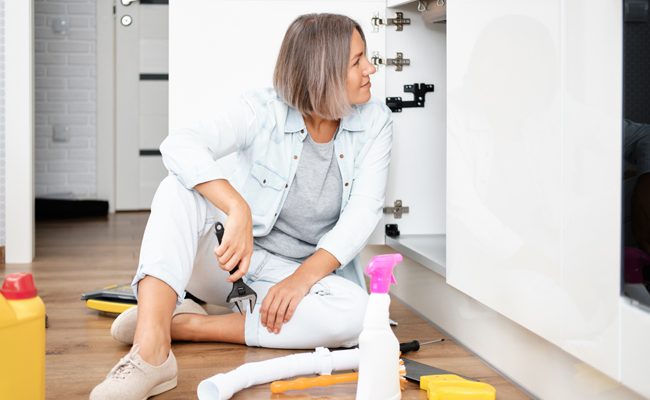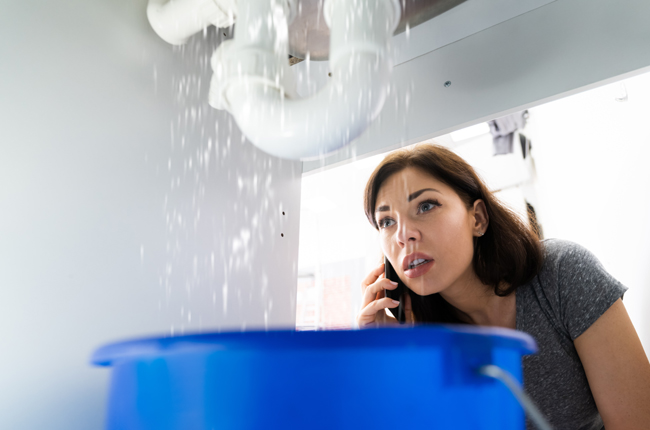
Having to deal with a plumbing problem can be aggravating and disruptive. Plumbing problems can occur at inconvenient times, and they can also trigger a cascade of further issues. However, if you maintain your composure, you can engage in certain activities to resolve the situation fast. You’ll need to determine the root of the problem and seek plumbing assistance to prevent it from recurring.
A pipe can develop a fracture, hole, or other forms of flaw over time. Here are the immediate steps you can take to minimize damage during a plumbing emergency:
1. Seek Emergency Plumbing Assistance
Even if you consider yourself handy, the amount of work required to get your property back to livable shape might overwhelm you. Additionally, the source of the leak isn’t always obvious, and by the time you discover it, your property may be completely submerged. Consider hiring a 24-hour emergency plumbing service near the western suburbs of Melbourne if you’re from the area since they’ll be there to assist you at all hours immediately.
Recognize the critical questions to ask to guarantee that you hire an experienced professional. Provide as much detail as possible to ensure that your plumber arrives equipped with the necessary tools. If you observe a flooded basement or frozen pipes, it’s essential to contact professionals immediately.
2. Cut Off The Water Supply
When you suspect a pipe is leaking, turn off the water supply to your home immediately. At the very least, you should shut off the water supply to the site suspected of causing the problem. For instance, if the toilet is leaking, you may be able to address the issue by turning off the valve behind it. This strategy prevents other fluids from flowing through your property’s plumbing system, giving you time to find a temporary solution to your problem.
3. Disconnect All Electrical Appliances
Electrical equipment can be ruined if your home suffers from a plumbing problem. As a result, it’s critical to turn off these appliances. When a plumber repairs a leak in your plumbing system, ensure that your water heater is turned off to prevent further damage. Before operating any electrical equipment, it’s prudent to verify that all water has been drained and fixed in the plumbing system.
4. Assess The Situation
After turning off the water and all appliances, determine the source of the plumbing emergency. Mildew, bubbling or peeling paint, or warped flooring are all signs of moisture or water damage. A musty, damp odor may also signal a problem, so use all of your senses to determine the source of the issue. If possible, determine the extent of the damage.
5. Eliminate Flooding
The next step is to remove all standing water. It can be accomplished by the use of mops and by leaving all windows and doors open. Cleaning the water before the plumber’s arrival helps avoid harm to your home’s contents. The greater the number of damaged products, the more costly repair and maintenance you’ll have to pay.
6. Clear The Spigots And Drains
Even if the main water valve is turned off, water will remain in your pipes. You can direct this water away from your home and probable damage locations by clearing drains and outdoor spigots. Squirt the garden hose several times to ensure that any remaining water is drained. If a minor clog or backlog occurs during this operation, open the drain gently using a plunger. Avoid injecting chemical cleansers into your pipes during an emergency as they may cause additional damage until your plumber arrives.

7. Document The Water Damage
Mold can grow on the floors, ceilings, and other surfaces of your home due to moisture. In some cases, this may result in mold growth within walls, beneath floors, or in other hard-to-reach regions. Even if you don’t need to remove components of your property to determine the degree of the damage, you may suffer severe losses.
For example, you may be tasked with restoring carpets, furniture, and appliances that have been submerged in water for several minutes, if not hours. Additionally, if a computer, television, or other electrical equipment was near the floor during the incident, it may be necessary to replace it.
By claiming with your homeowner’s insurance carrier, you may be able to recoup a portion of your damages. When filing your claim, you should include any supporting photographs, videos, or documents that may aid in awarding your claim.
Takeaway
Plumbing emergencies can strike at any time, which is why it’s critical to be prepared. Rapid action can help you avoid major damage to your house and the associated costs. You’re on the right track if you switch off the water and clean up the mess. Additionally, you can save costly damage by contacting an emergency response plumber.
Leave a Reply